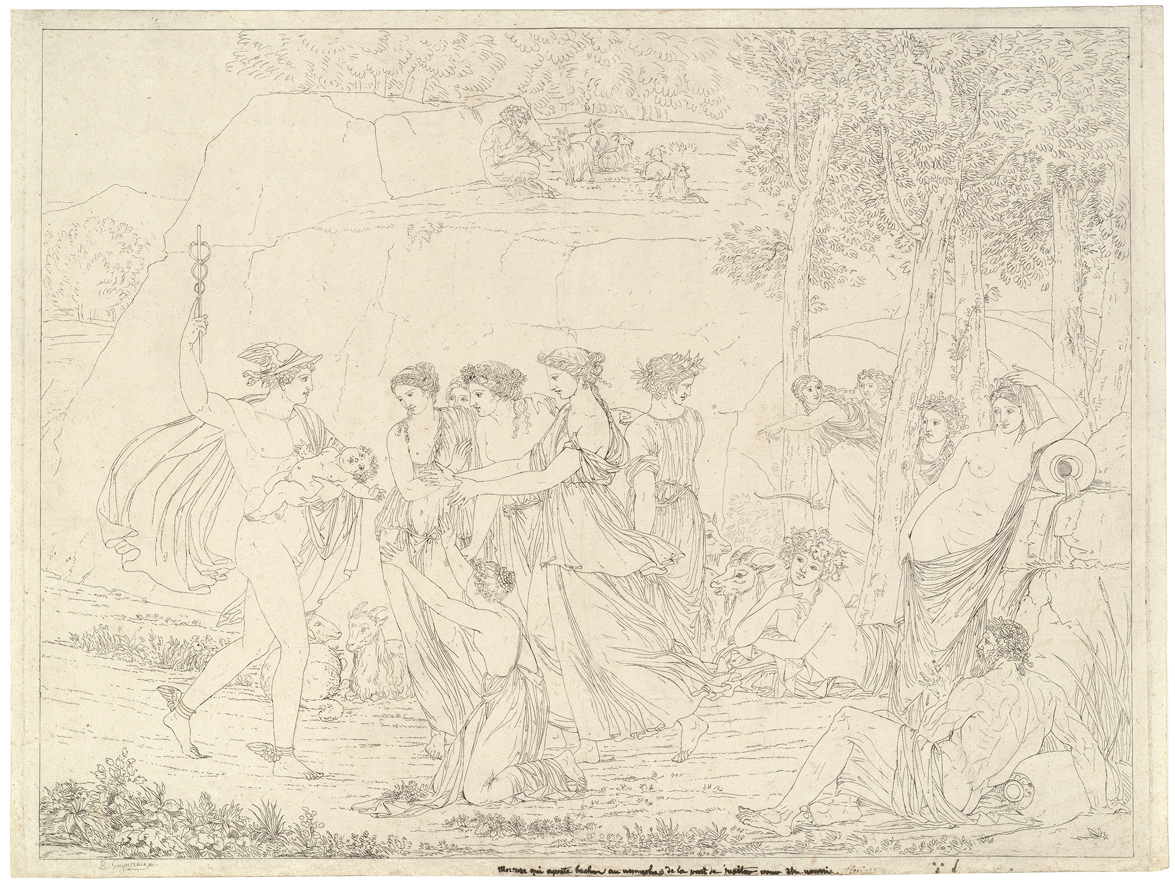Loading the page ...
Bénigne Gagneraux
(1756 Dijon – 1795 Florence)
Mercury Hands over the Infant Bacchus to the Nymphs. Etching, partly reworked in pencil. 49.7 x 64.1 cm. Inscribed in pen and black ink in the artist’s own hand: “Mercure qui apporte bacchus aux nymphes de la part de Jupiter pour être nourrices”. Sandström 1981, pp. 50, 89, 211; no. 459.
The eventful career of the painter and etcher, Bénigne Gagneraux, reflects the major political upheavals of his time. His talent won him the Prix de Rome in 1776 and he began his studies in the Eternal City in 1778. Initially Gagneraux earned a living by making copies after Old Masters and working as a decoration painter. He thus came to the attention of King Gustav III of Sweden, who forthwith made the artist his protégé. Gagneraux gained his first major public success with a work commissioned in 1785 entitled The Meeting between Gustav III and Pius VI in the Vatican Museum of Antiquities (Nationalmuseum, Stockholm), which Goethe mentioned in the account of his journey to Italy and resulted in a visit to the artist’s studio in Rome by Duchess Amalie of Saxe-Weimar. Even after the murder of Gustav III in 1792 Gagneraux continued to work for the Swedish court as well as for the Roman nobiltà and French aristocrats who had fled the country. Gagneraux was evidently a convinced monarchist, for in January 1793 the artist fled to Florence after having been wounded during a rally in Rome in opposition to the French Republic. Gagneraux was appointed a professor at the Academy and continued to work mostly for foreign clients. While he was in Florence, Gagneraux was awarded the title of a Swedish court painter in 1794. However, he died in unclear circumstances in the summer of 1795 immediately before his departure for Sweden.
The present etching is exceedingly rare and not included in the register of the Inventaire du Fonds Français drawn up by Baudot. Sandström dates the sheet to 1789/90, noting that the strictly neo-classical, frieze-like composition forms the companion piece to a drawing of roughly the same size entitled “The Feast of the Rural Gods” in Florence (Gabinetto Disegni e Stampe degli Uffizi; see Exhibition catalogue Bénigne Gagneraux. Un pittore francese nella Roma di Pio VI. Roma, Galleria Borghese, 1983, No. 64, pp. 143–144). This outline etching with a multitude of figures is noteworthy for its very large format and the elegance of its linear purism. It is probably a working copy by the artist. In the right half of the picture Gagneraux has sketched the leaves of a shrub with fine strokes of the pencil. The impression in the Bibliothèque Nationale in Paris shows extensive reworkings, for instance in the terrain in the foreground and in the foliage of the group of trees on the right. A very fine impression with thread margins, trimmed to the platemark on the right and left. Minor ageing, otherwise in excellent condition.
